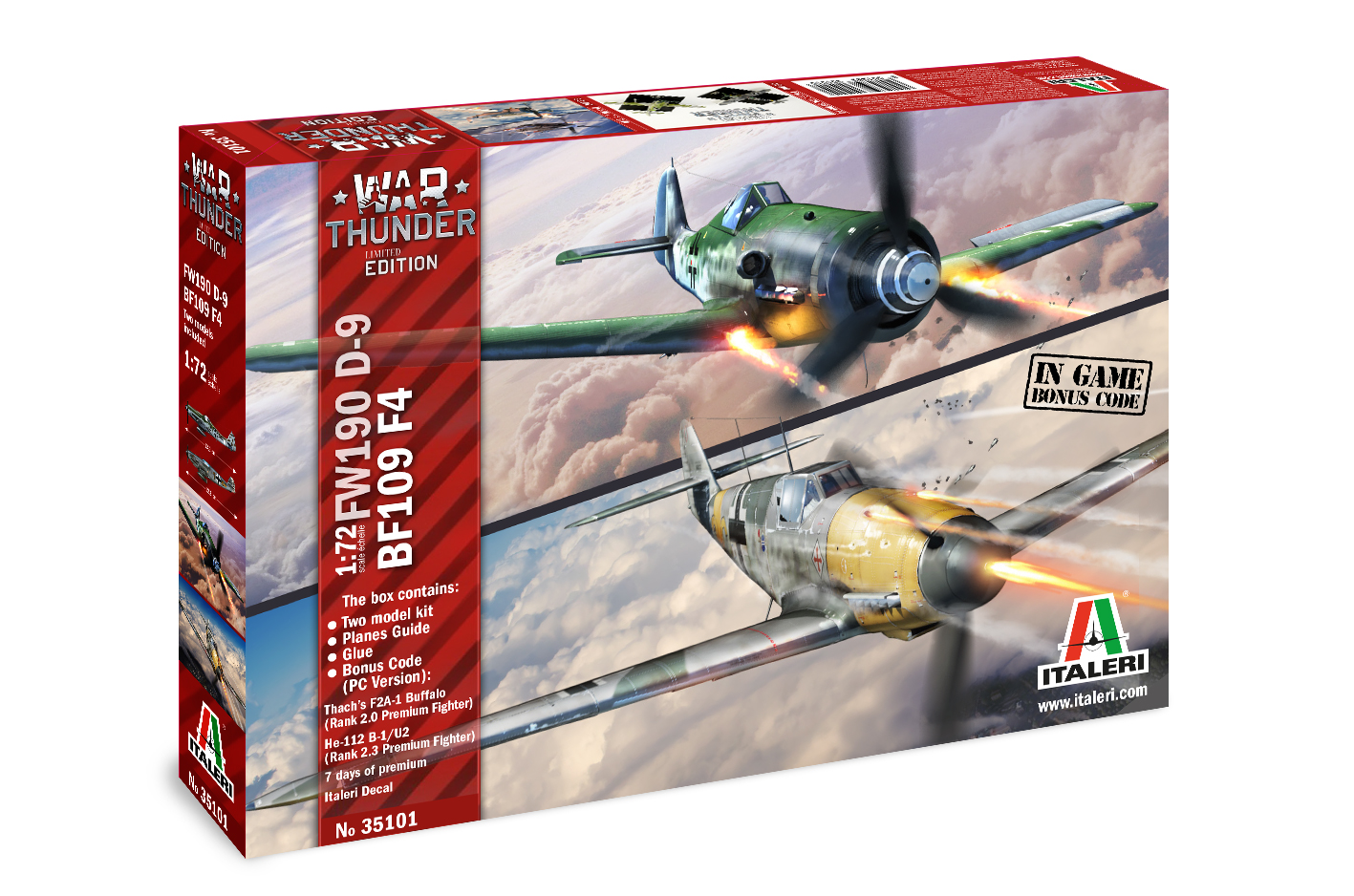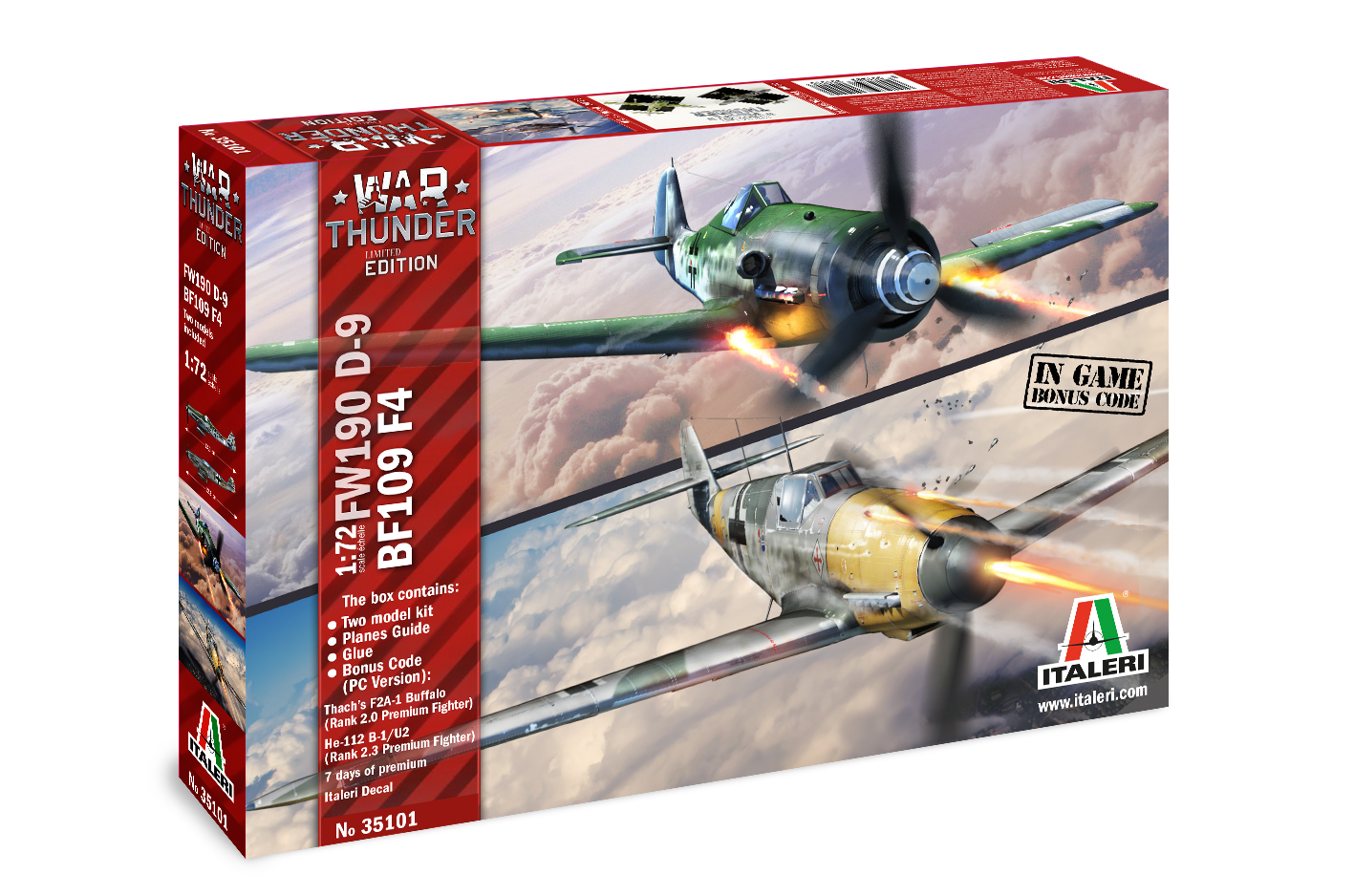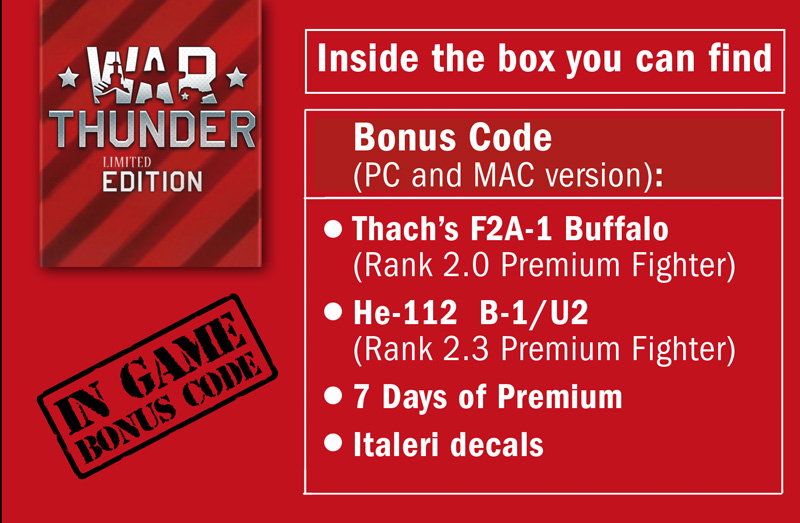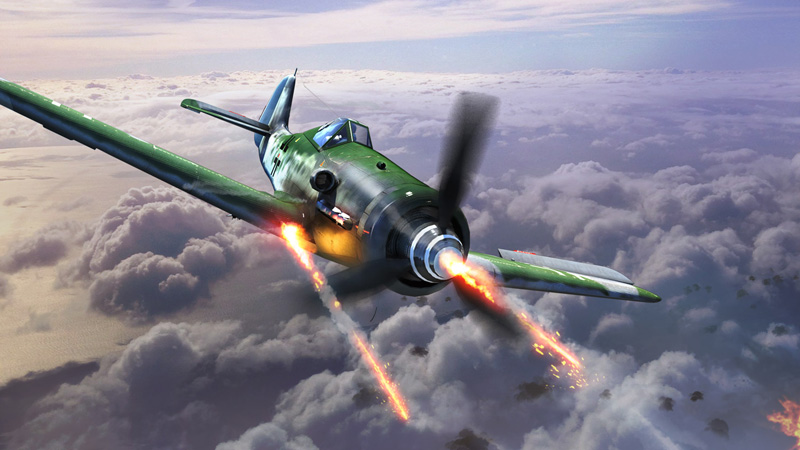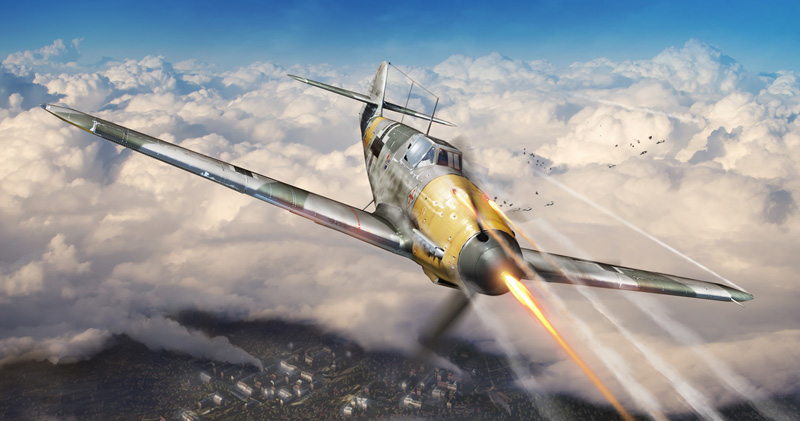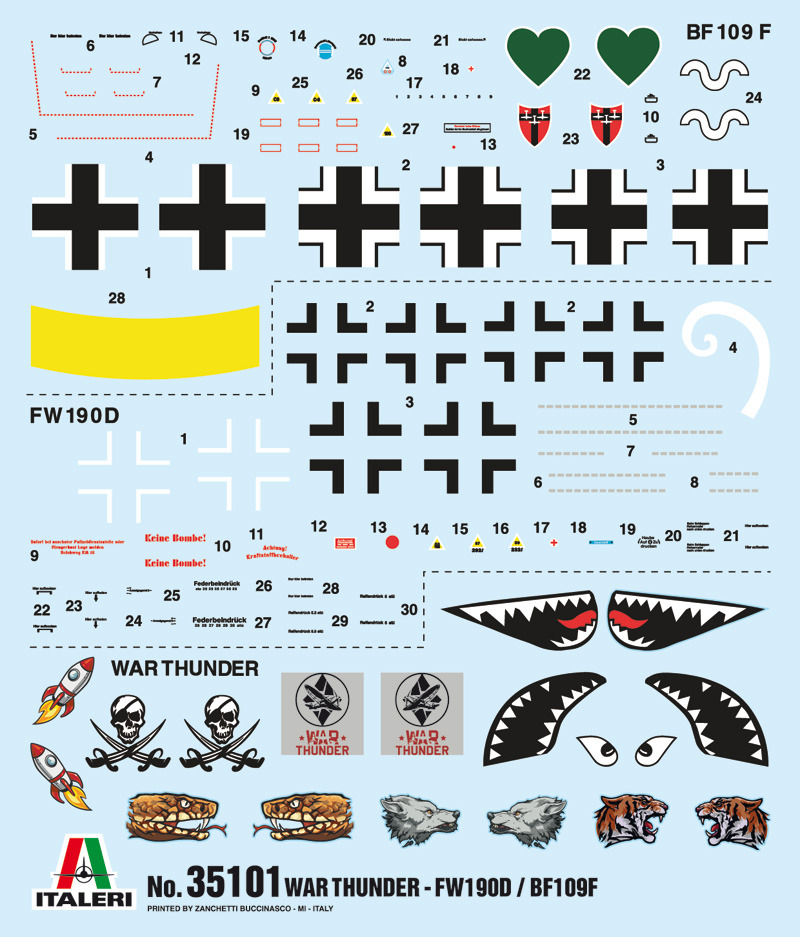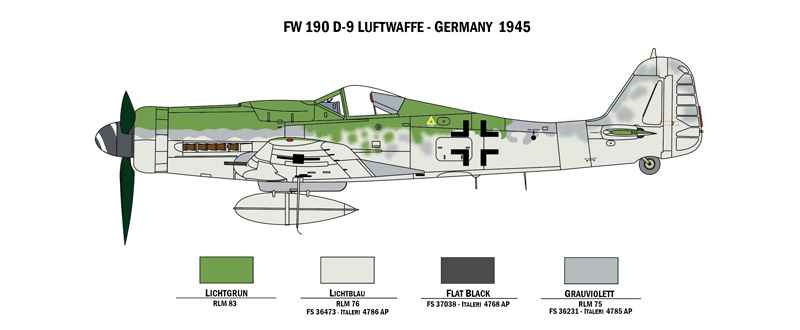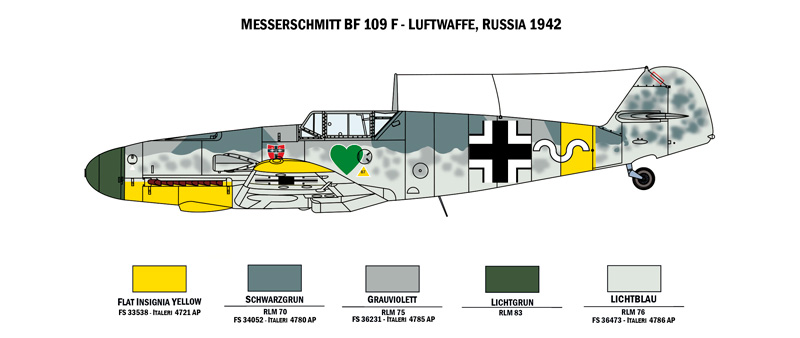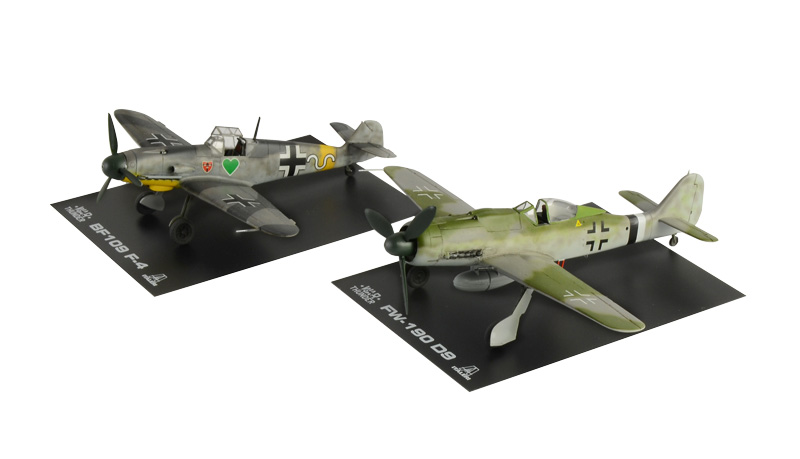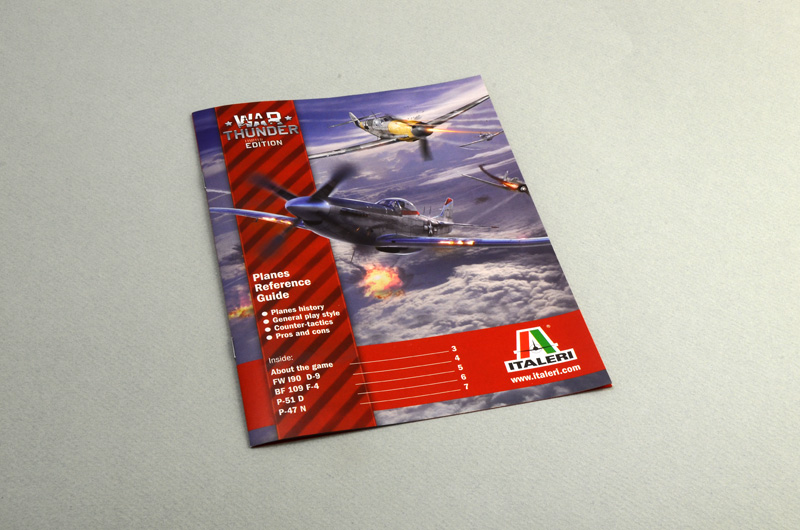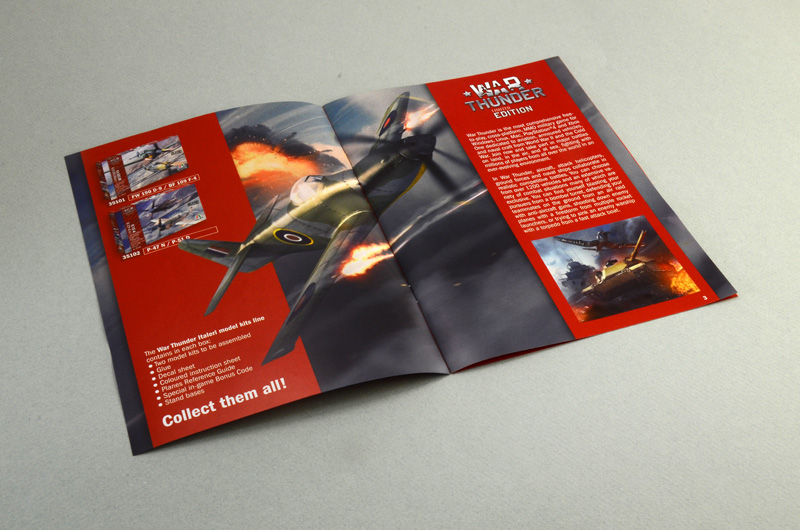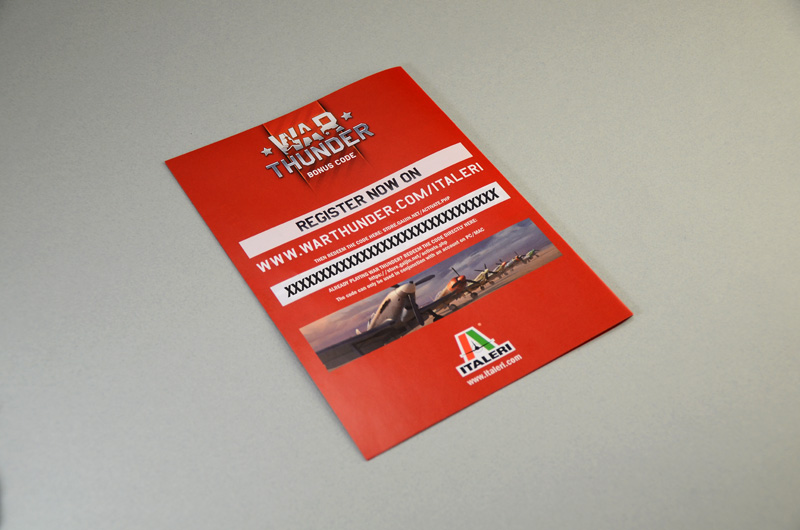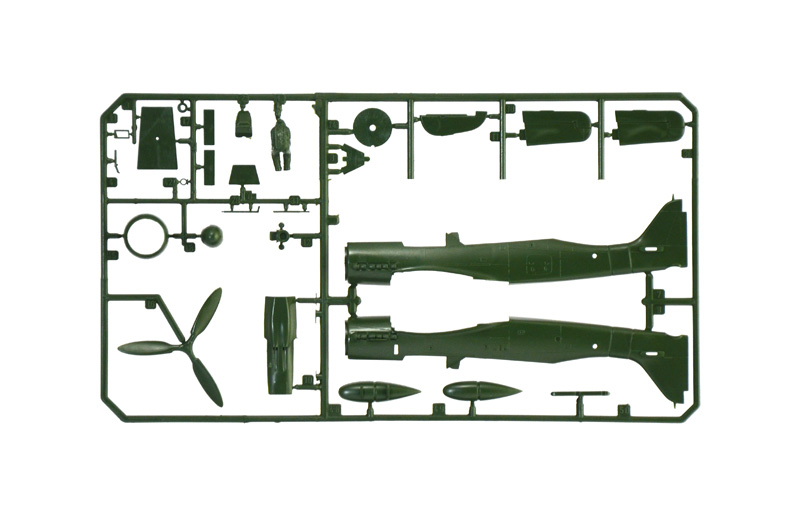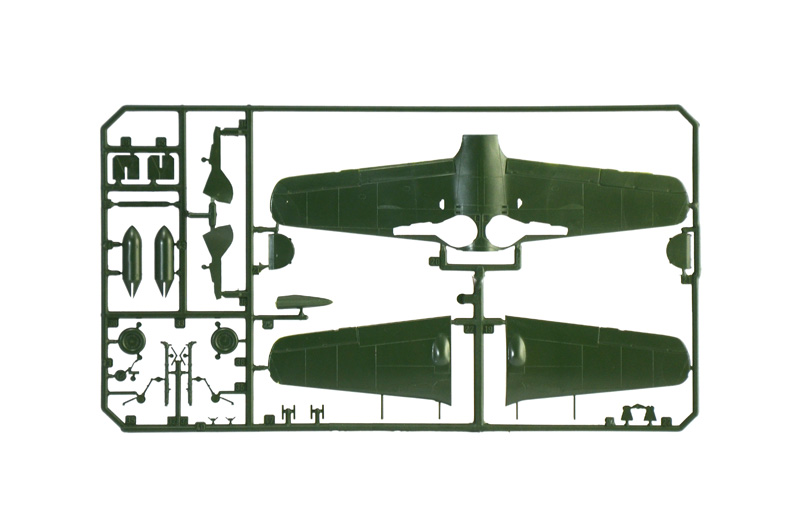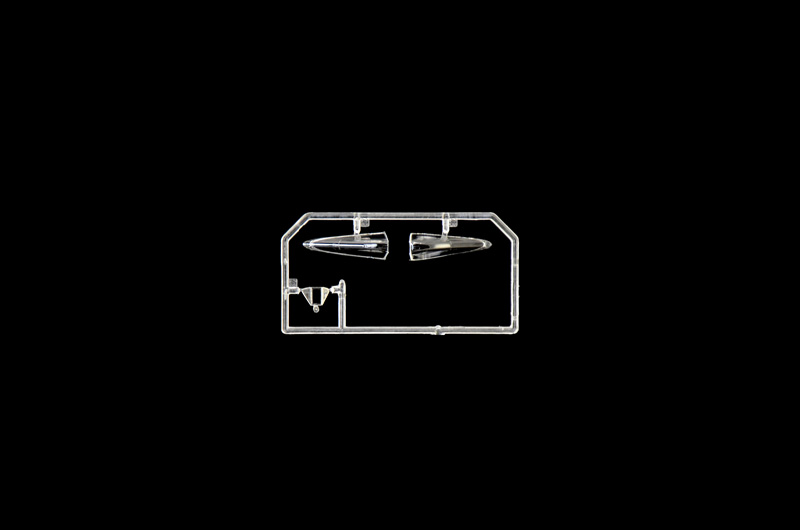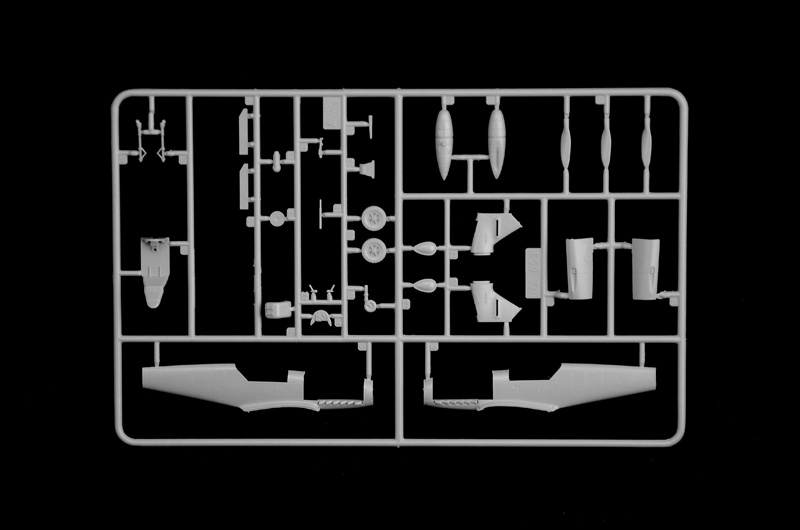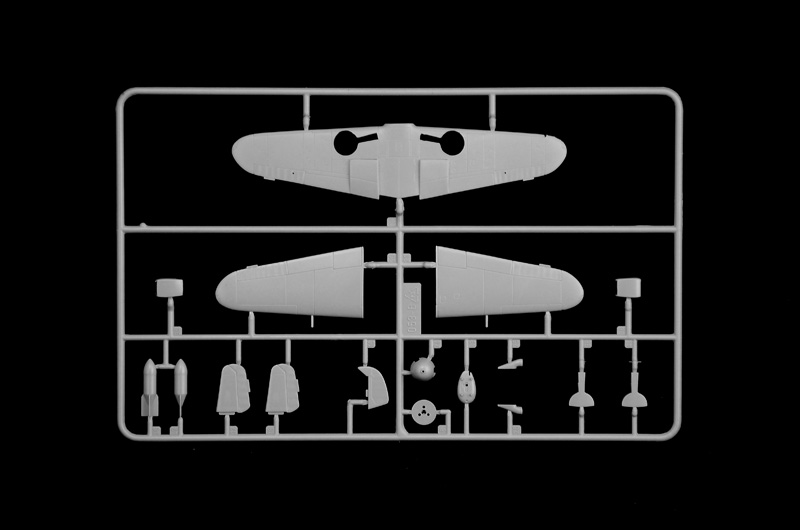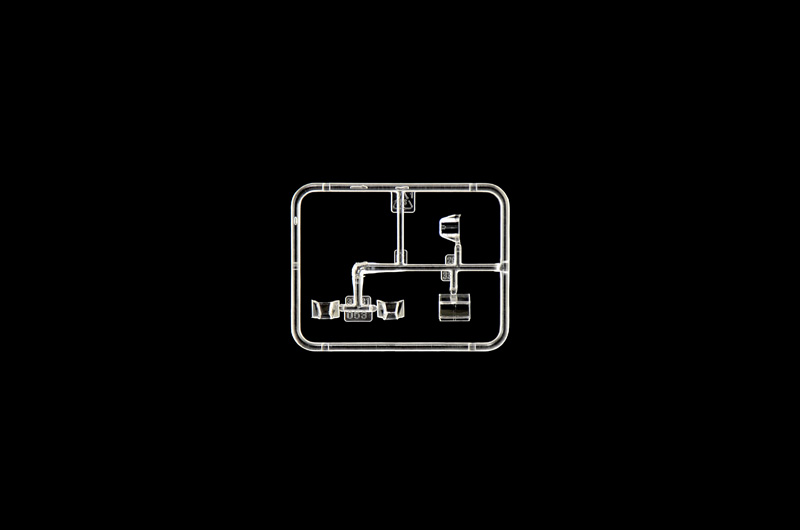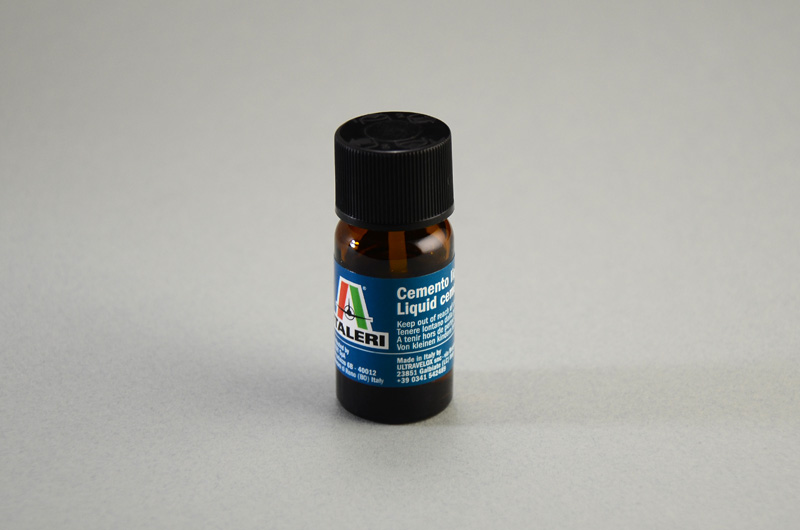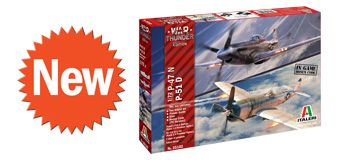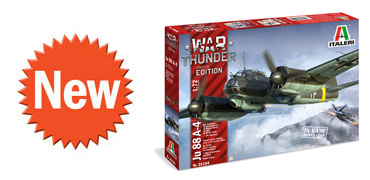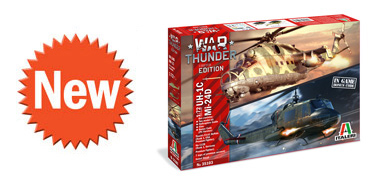W.T. - BF 109 F-4 & FW 190 D-9
Type Fighter aircrafts
Period Second World War
Country Germany
SKILL 2
Model Dim. 13,3 cm & 12,5 cm
Box Dim. 345 x 242 x 48 mm

Description
The box contains:
Two model kit - Colored Sprues - Planes Reference Guide - Color Instuctions sheet - two Stand bases - Glue -
Bonus Code (PC/Mac Version): Thach’s F2A-1 Buffalo (Rank 2.0 Premium Fighter) He-112 B-1/U2 (Rank 2.3 Premium Fighter) - 7 days of premium - Italeri Decal
FW 190 D-9
Kurt Tank, the designer of the venerable Fw-190 lineup quickly realized by 1943 that the field of aerial warfare was changing rapidly. The world had moved on beyond dive bombers, and the allies had begun forming massive, four engine bomber wings that devastated Axis ground troops and factories. At the time, Fw-190’s played similar rolls to the American P-47 Thunderbolts, serving as ground attack planes and low altitude interceptors. Fw-190’s retained air superiority over allied forces all the way up to the introduction of the British Spitfire Mk. IX. Despite this impressive service record, Fw-190’s had one flaw, which would soon usher in the need of the “Dora” Line-up. Their performance was hindered drastically at higher altitudes, where aerial warfare was now moving towards. Germany, in desperate need of fighters to engage and stop these massive bomber raids had turned to Messerschmitt and Focke-wulf to produce a high altitude interceptor, and Kurt Tank’s response was the Fw-190 D-9.
BF 109 F-4
In 1943, the Bf 109 entered service, while its performance was less then stellar, its worth derived from the ability to be easily modified into dedicated fighter bomber, high altitude interceptor or reconnaissance. likewise great care was taken to make sure the G6 could fit heavy armament for attacking bombers, which were beginning to appear in force over Germany, and the shortcoming of the Fw 190’s at high altitude became increasingly apparent. In 1944, the RLM, wishing to standardize fighter production, approved the Bf 109 G-14, which essentially a standardized version of the 109, with all improvements found on late production G-6’s, including an enlarged vertical tail surface, a new canopy and Flettner tabs, for better control at higher speeds. to easy construction, it had a non retracting tailwheel, and the distinctive bulges on the upper cowling, which housed the breechlocks of the machine guns.
Related products
